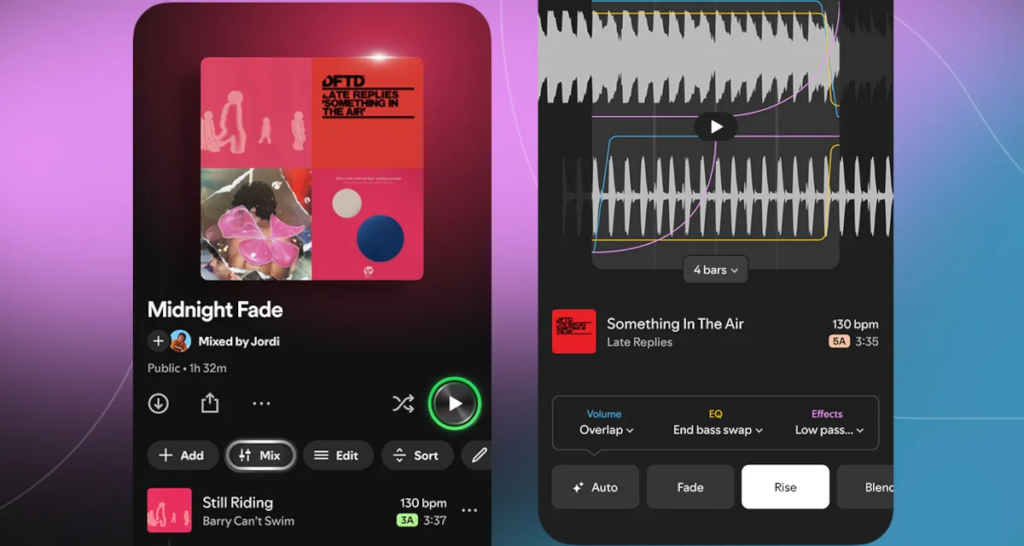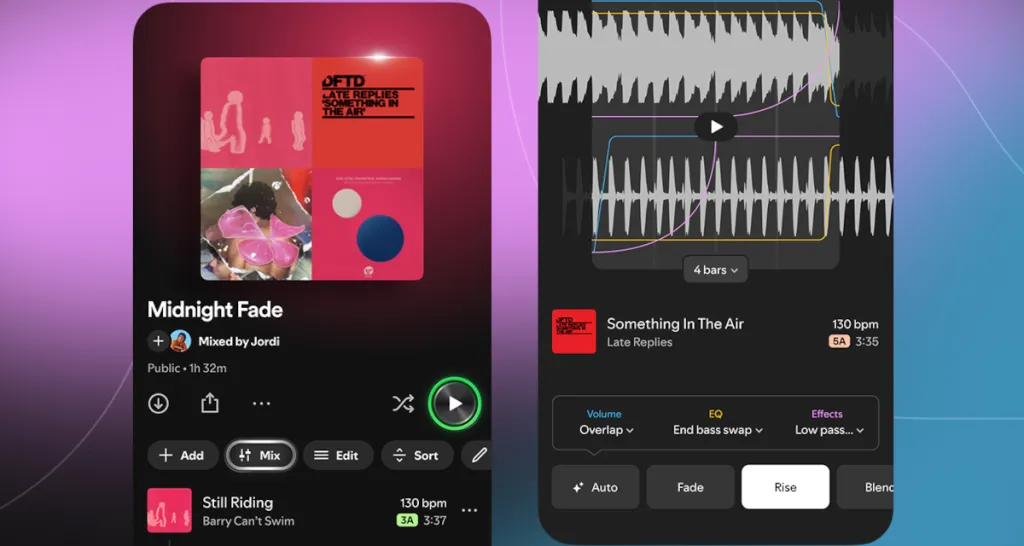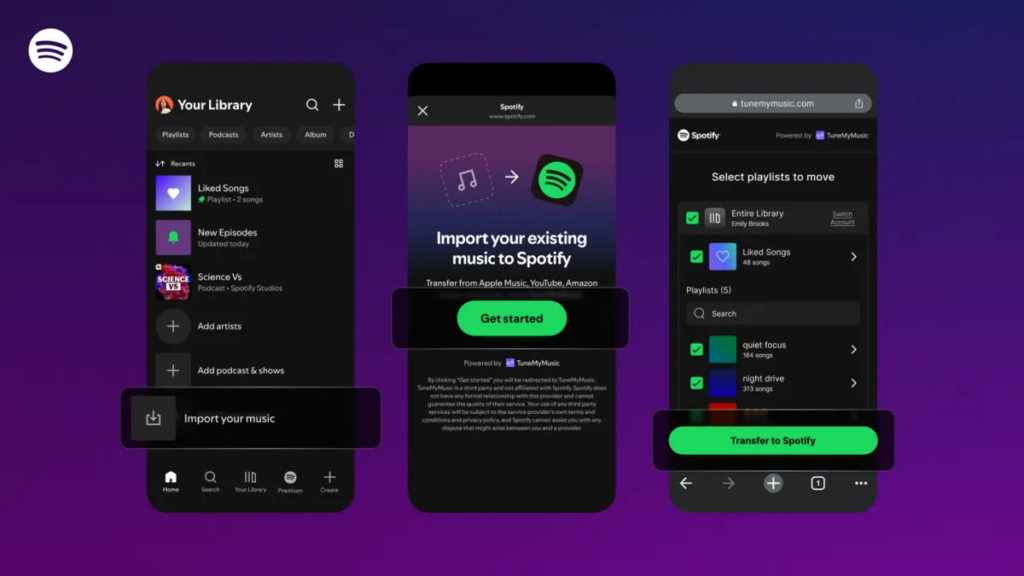Spotify Ups Its Playlist Mixing Game Following Apple Music’s AutoMix Launch

Spotify has released a playlist mixing tool in beta. Photo Credit: Spotify
Following Apple Music’s AutoMix launch, Spotify is upping its playlist mixing game with the addition of customizable transitions and effects.
Spotify unveiled the fresh feature this morning, pointing to the beta’s imminent rollout for “eligible Premium users.” According to multiple X posts penned by ticked-off subscribers, however, mixing support isn’t yet live throughout Europe or in nations including Brazil.
(Two years and change later, Brazil-based Spotify users are still awaiting the domestic rollout of AI DJ, one irked individual reiterated in more colorful language.)
In any event, Spotify is touting the tool as a means of better customizing and differentiating playlists, which, across the entire platform, are now said to number nearly nine billion.
(A noteworthy stat against the backdrop of AI music’s growing prevalence: When announcing the expansion of its Playlist Cover Art tool in mid-June, Spotify confirmed the presence of “more than 8 billion playlists.” Apparently, the number has increased, seemingly by a lot, during the past two months alone.)
Accessible via playlists’ aptly named “Mix” button, the new feature, like Apple Music’s aforementioned AutoMix, includes an “Auto” option that delivers “an instant blend,” Spotify noted.
But Spotify’s offering also supports presets such as “Rise” and “Fade” – besides allowing customization-minded users to dig even deeper with “specific settings for volume, EQ, and effects.” One can, Spotify drove home, “use the waveform and beat data to find the best spot in each track for your transition.”
If early social-media responses are any indication, there’s a good bit of interest in the mixing feature, which, many already know, marks the latest in a long line of playlist-focused buildouts for Spotify.
That said, much has changed since AI DJ went live in 2023 and Daylist exploded in popularity during 2024. On the subscribership front, data shared with and broken down by DMN Pro has been shedding light on strong market-share gains for Apple Music – and a paid-user dip for Spotify in the U.S. between January and April 2025.
Meanwhile, the sweeping price hikes Spotify announced earlier in August are hitting a number of regions, albeit with the conspicuous exception of North America. At the intersection of both points, is Spotify’s emphasis on popular playlist tools one component of a broader strategy to fend off rivals in competition-heavy established markets?
It’s certainly possible – especially given that DSPs like Apple Music are adding features of their own and (perhaps more pressingly) charging less than Spotify in several instances.
One example: Apple Music is testing a playlist and library transfer tool in New Zealand and Australia. Down Under, Apple Music Individual currently costs A$3 less per month (A$12.99 versus A$15.99) than its Spotify counterpart, and the latter’s subscribers appear well aware of the difference.
Link to the source article – https://www.digitalmusicnews.com/2025/08/19/spotify-mixing-feature-launch/
-
Arturia MiniFuse 2 USB-C Audio Interface, White$149,00 Buy product
-
Mendini by Cecilio Kids Drum Set 5 Piece – Full 16in Youth Drumset with Bass, Toms, Snare Drum, Cymbal, Hi-Hat, Drumsticks & Seat for 5 to 12 Year Old and Beginner Adult Set – Blue$199,85 Buy product
-
KNOBLOCH STRINGS THE ART OF VIBRATION KNOBLOCH STRINGS, Ambidextrous, Metallic Silver (12)$0,00 Buy product
-
AEspares Brass Taxi Horn Car Vintage Look Rubber Bulb Horn Trumpet Loud Sound Bugle$33,56 Buy product
-
KALI AUDIO WS-6.2 Dual 6” Subwoofer$499,00 Buy product
-
Fender FCT-2 Professional Clip-On Tuner$29,99 Buy product













Responses